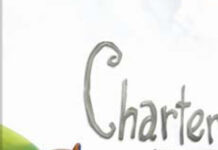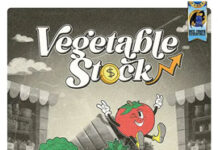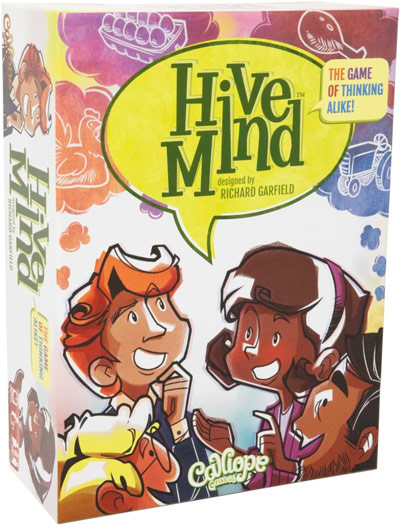
I previously reviewed the original Hive Mind board game in October 2017. At that time, I thought Hive Mind was the best family board game … and in 2024, I still believe that as well.
Calliope Games let Hive Mind go out of print for a few years, but recently brought Hive Mind back with a major facelift. Basically, Calliope streamlined the game to make it faster and easier for players.
Hive Mind is a fantastic party game that supports up to 12 players
Hive Mind is a Family Board Game from Richard Garfield. Richard Garfield is the mastermind who created Magic: the Gathering, King of Tokyo, Bunny Kingdom, and many other popular games.
Hive Mind is a great game for large families, parties, and gaming groups. Hive Mind is super-easy to learn and super-easy to teach.
The goal of Hive Mind is to try to think like everyone else at the table by having a “hive mind”. Instead of there being one winner like most games, Hive Mind has one loser … who gets squeezed out of the hive for not thinking enough like everyone else.
What’s in the box?
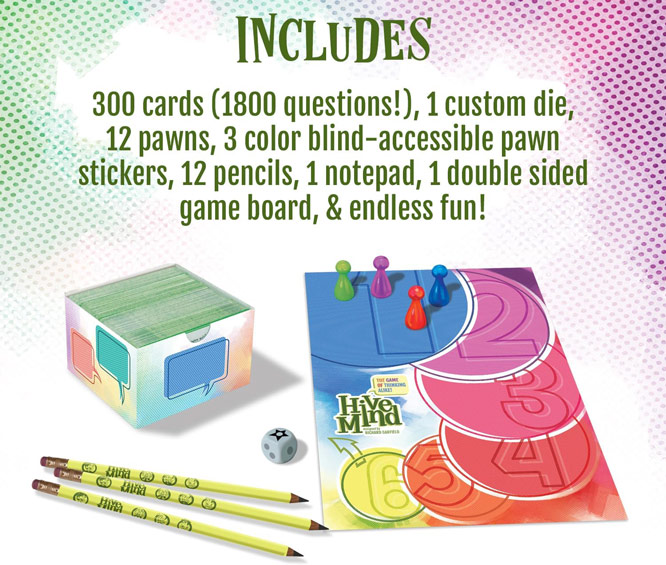
The game comes with:
- 300 cards (1800 questions)
- 1 Double-sided Mind Board – for longer or shorter games
- 1 6-sided custom die
- 12 Plastic Mind Pawns
- 12 Pencils
- 1 Notepad
- 1 Rulebook
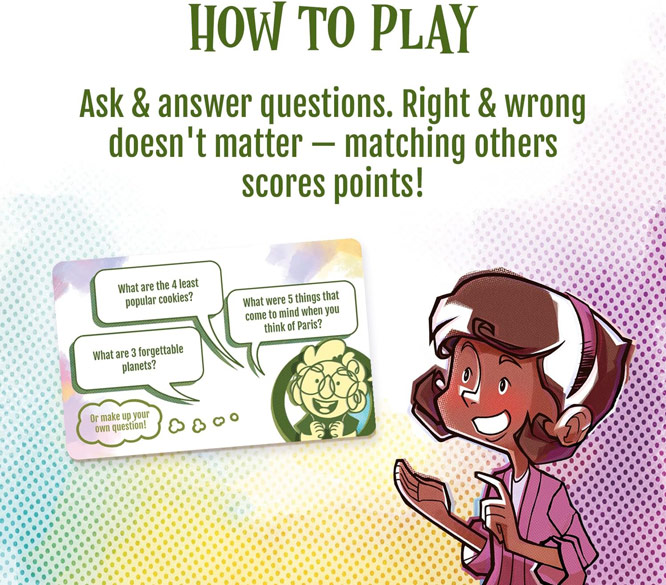
Game Play
So, how does the Hive Mind play?
All players pawns will start on space #1 on the game board. During a turn, the active player will roll a die to determine how many people will move down the track.
Rolls:
- 1 – All players that had the single lowest score for the turn move their Mind pawns down one level on the Mind board
- 2 – All players with the two lowest scores for the turn move their Mind pawns down one level on the Mind board
- 3 – All players with the three lowest scores for the turn move their Mind pawns down one level on the Mind board
- Star – All players that had the single lowest score move their pawns down one level, and all who had the highest score move their pawns up one level.
The active player then takes the next Question Card from the box. Question Cards will have 3 questions for the active player to pick from. The active player must pick one question and ask everyone at the table that one question. After the question is read, everyone at the table has about 2 minutes to write down their responses on a sheet of paper.
After the time is up, the active player reads his answers out loud and checks to see if their answers match anyone else at the table. For every match at the table (including your own answer), everyone at the table gets a point. So even if you don’t match anyone at the table, you still get at least one point. After the active player finishes, everyone else at the table has a chance to read their different answers, and try to accumulate points by matching others at the table.
Everyone’s answer sheets are then tallied. Then, based on the die roll, some Mind pawns will move up and/or down on the Mind board. When one or more Mind pawns leave the board, the game ends, and everyone still left on the board are considered winners.
Example of a Question card and game play:
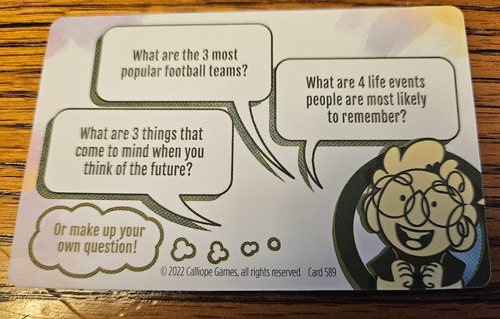
In the above example, the active player has to choose from these three questions. They might choose and read: “What are 3 things that come to mind when you think of the future?“
Then everyone gets their pencils and paper and writes down 3 things secretly from everyone else. The active player might write something like:
- Flying cars
- Artificial Intelligence
- Ray Guns
Then, after two minutes, after everyone has written down their answers, the active player starts reading their answers one response at a time. Players automatically score 1 point for each response they wrote, plus 1 additional point for each other player that wrote down a matching response.
Players raise their hands each time one of their responses matches another player’s response. All players tally their points as responses are read.
After that active player has read their entire answer, go clockwise around the table and have the next player read their responses. Do this until all players have read their responses.
Final Thoughts
I love this game! Three of my friends immediately bought this game for their families after our family taught this game to them.
The game is reasonably priced with a MSRP of $29.99 U.S. Click here to check the current price on Amazon.com.
The game is very easy to teach. You just basically read a question, and ask people to match answers. There are no intricacies here.
It’s fun for all ages!
The box says Ages 8 & Up. That sounds reasonable. Different age groups can really change answers to questions. I was playing with a group of 8 players ranging from teens to retirement age. The question was something like: “Name 3 Musicals”. The older players had answers like “West Side Story” and “Hello Dolly”. The younger players had answers like “High School Musical” and “Beauty and the Beast”.
There are a lot of laughs.
You will laugh at a lot of people’s answers. When folks can’t think of “5 words that end in the letter Z”. They might write down something funny, and it might actually match up with other completely wrong answers. We had two people write “because” – because it sounded like “z” at the end, and they each got two points for that!
The more the merrier!
I think this game plays best with 5 or more players. I would not break this game out for 2-4 players. The game gets better with every player added.
You can play with more than 12!
There are 12 different colored Mind pawns in the box, but there is no reason you can’t play with more people. If you have more than 12 people, grab a token from another game, or a coin, or something else to represent the other people.
There is some strategy.
In order to stay on the Mind board, you should try to think like the hive. If it’s your turn to pick a card, then pick a question you know a lot of answers to. Also, try to write down answers appropriate to your group. Example: Answer movie questions with movies appropriate for the age/era of the group you are playing with is. Don’t answer “Minions” to anything if you are playing with a large group of senior citizens. And don’t answer “Hello Dolly” to theatrical questions if you are playing with kids. 😉
There are a lot of winners!
If you are playing with a group of 10, usually you will have 8 or 9 winners instead of 8 or 9 losers. So almost everyone is happy at the end of the game. And it doesn’t even suck to be the loser. This is a game you will have fun even if you are the only person to leave the hive.
—–
Here is a link to Amazon.com to check out more reviews from people who also have purchased the game.

